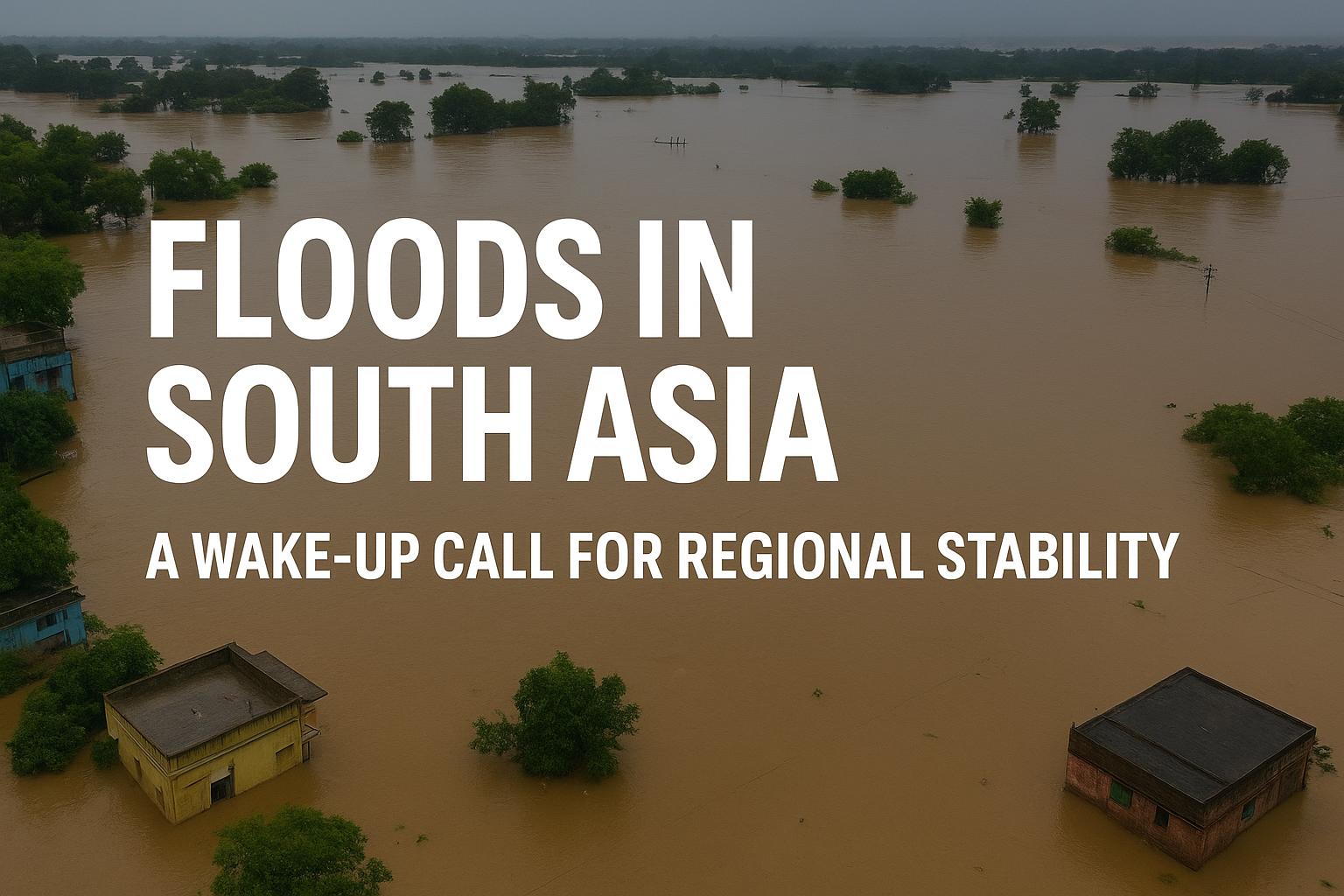Floods in South Asia are no longer a rare disaster, they have become an annual reminder of the region. From Sindh province in Pakistan to Punjab state in India and the delta plains of Bangladesh, entire villages are submerged in water every monsoon season. Climate change is making rainfall even more unpredictable, after that, weak infrastructure and poor planning exacerbate the impact of disasters.
The question is: will South Asian countries, which are already navigating fragile political ties and tensions, be able to forget their differences and forge a common strategy to fight floods?
A Region Caught Between Climate and Politics
South Asia is one of the world’s most flood-prone regions. Every year, during the monsoon season, millions of people face displacement, loss of crops and infrastructure collapse. The 2022 monsoon floods in Pakistan affected more than 30 million people, and damages of a similar scale are also seen in India and Bangladesh.
But blaming just climate change would be an easy solution. The truth is that poor urban planning, lack of drainage systems, and unchecked construction make the flood impact even more dangerous. When the situation repeats every year, the Government should not give permission to build residential area in front of the river and this also makes it clear that the issue is not just natural but is also a political and governance failure.
India–Pakistan Rivalry: Cooperation or Missed Opportunity?
When floods occur they do not look at the border but only at the disaster, the best example of this is India-Pakistan’s political and military rivalry. Both countries do not cooperate for water management and flood response and yet both countries have to suffer huge losses.
- India suspended the Indus Waters Treaty during the 2025 conflict with Pakistan due to which there will be tensions between the two countries in the future.
- Both countries have advanced satellite data and weather prediction systems, but sharing is almost zero.
If India and Pakistan cooperate in basic information-sharing and joint disaster drills, both countries could benefit. But, till now floods are also seen from a geopolitical leverage point of view, not from a common threat perspective.
Bangladesh and Nepal: The Forgotten Voices
The flood story of South Asia is not limited to India and Pakistan, but also includes Nepal, which has large melting glaciers, such as the Kanchenjunga Glacier and Ngojumba Glacier, that make river flows more unpredictable. Also, Bangladesh, a low-lying delta country, suffers significant damage from floods every monsoon season.
However, these countries often get sidelined because countries like India and Pakistan already suffer significant loss of life and property every monsoon season, so much so that no one focuses on them. In contrast all the flood-prone countries should unite on this issue and find a solution, which should be a regional flood management framework that includes everyone.
The Global Dimension
Floods do not just affect South Asia but also cause global instability as food insecurity increases and displacement creates refugees, which eventually is carried over to global markets and migration trends.
International donors and organizations provide billions in aid every year to flood victims, but if governance and planning remain weak and there is corruption, this will remain only a short-term band-aid.
Final Thoughts:
As you saw in the article, floods have become an annual tragedy in South Asia. Each year, more devastating than the previous year, but the government uses the same old solutions and false promises. This is not only a climate emergency but also a test of regional stability. Unless countries rise above their political divides and formulate a collective strategy, each monsoon season will return as a nightmare for millions of people.

